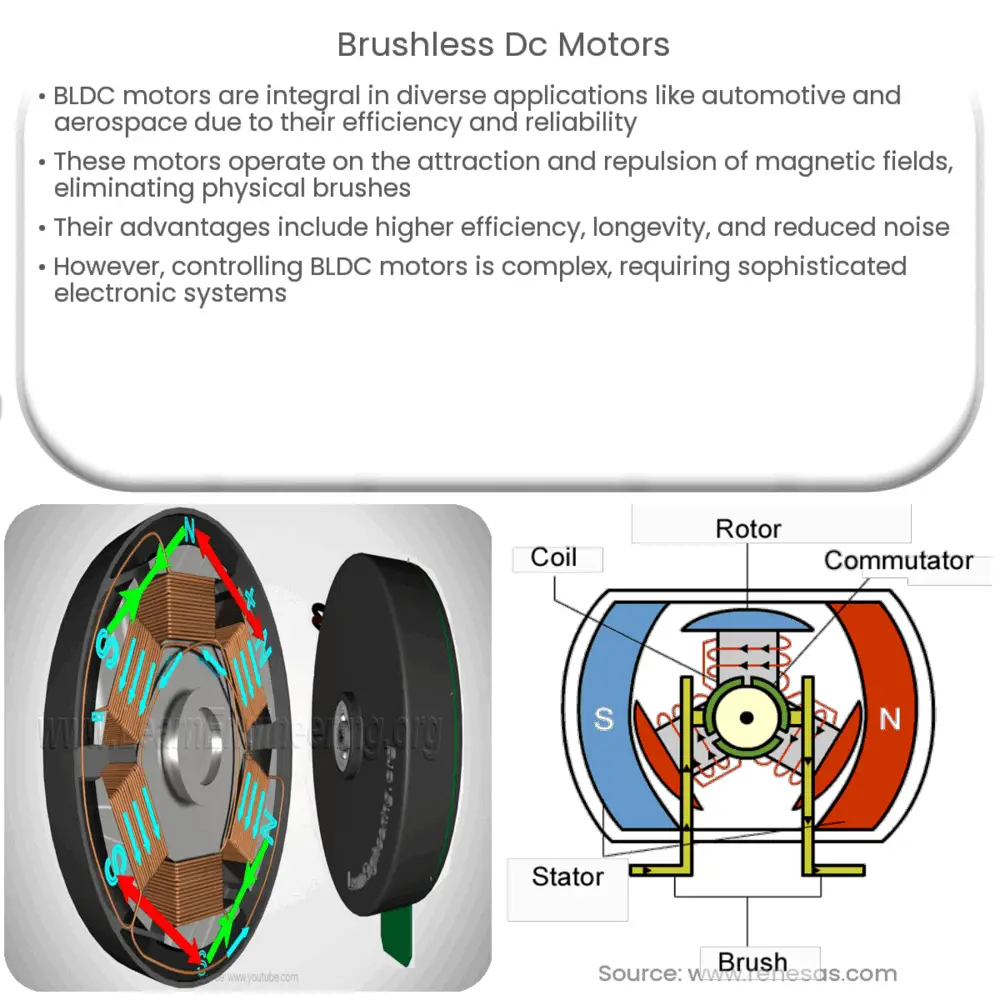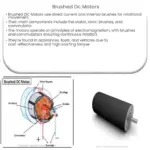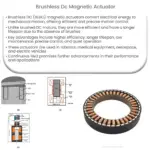Explore the principles, advantages, complexities, and applications of brushless DC motors in this comprehensive guide.

Introduction to Brushless DC Motors
Brushless Direct Current (DC) motors, also known as BLDC motors, have become a significant part of the technology landscape, empowering diverse applications across multiple industries. They are especially popular in sectors that require high power efficiency and reliability, such as automotive, aerospace, home appliances, and medical equipment.
The Working Principle of BLDC Motors
The fundamental principle behind BLDC motors is the attraction and repulsion between magnetic fields. Unlike brushed DC motors that use brushes to switch the magnetic polarity of the rotor, BLDC motors leverage electronic commutation, effectively eliminating the need for physical brushes.
- Stator: The stator in a BLDC motor is comprised of multiple magnetic poles, typically created using wound coils. The stator, being the static part of the motor, plays a crucial role in generating the magnetic field.
- Rotor: The rotor is made of permanent magnets and rotates in response to the magnetic field generated by the stator. In BLDC motors, the number of rotor poles usually equals the number of stator poles.
By electronically switching the polarity of the stator’s magnetic field, the rotor is induced to keep turning. This is achieved by a controller that receives feedback on the rotor’s position through various sensing techniques, including Hall effect sensors or back-EMF.
Advantages of BLDC Motors
BLDC motors present several advantages over their brushed counterparts. Key among them include:
- Efficiency: BLDC motors are highly efficient, largely due to the absence of brushes, which minimizes energy loss due to friction and heat.
- Longevity: The brushless design contributes to longer lifespan as it reduces wear and tear associated with mechanical brushes.
- Noise and Vibration: The absence of brushes leads to smoother operation and consequently lower noise and vibration.
These advantages make BLDC motors a preferred choice in applications demanding high efficiency, reliability, and longer operational lifespan. Despite these benefits, they also have certain complexities related to their control systems, which we will explore in the next section.
Complexities of BLDC Motors
While BLDC motors boast superior performance, they do introduce certain complexities, primarily related to their control systems. Unlike brushed motors, where speed and direction control are relatively straightforward, controlling a BLDC motor requires an understanding of the rotor position and a complex electronic controller, usually a microcontroller or digital signal processor (DSP).
This complexity arises because the motor’s electronic controller must sequentially energize the stator coils, creating a rotating magnetic field that keeps the rotor turning. This necessitates precision and real-time feedback about the rotor’s position, typically obtained via Hall effect sensors or sensorless techniques like back-EMF sensing.
Applications of BLDC Motors
BLDC motors find a wide range of applications due to their high efficiency, longevity, and low noise characteristics. Here are a few noteworthy areas:
- Automotive Applications: BLDC motors are extensively used in electric vehicles for propulsion, and in other systems like power steering and cooling fans.
- Industrial Automation: In industrial settings, BLDC motors power conveyors, robots, and other automated equipment due to their precise control capabilities.
- Consumer Electronics: From drones to computer cooling fans, the usage of BLDC motors in consumer electronics is widespread.
- Aerospace: The reliability and efficiency of BLDC motors make them suitable for use in spacecraft propulsion systems.
Conclusion
In summary, brushless DC motors represent a significant evolution in the field of electric motors. They provide enhanced efficiency, longevity, and reduced noise, making them a go-to choice for various demanding applications across multiple industries. However, their complexity and the need for sophisticated electronic control systems make them a challenge to design and implement. Despite this, their widespread adoption is testament to their undeniable benefits, which continue to drive innovations and improvements in this technology.




